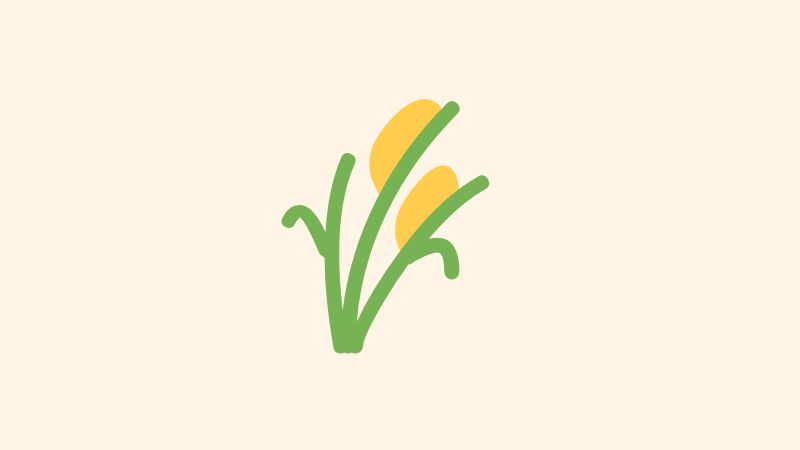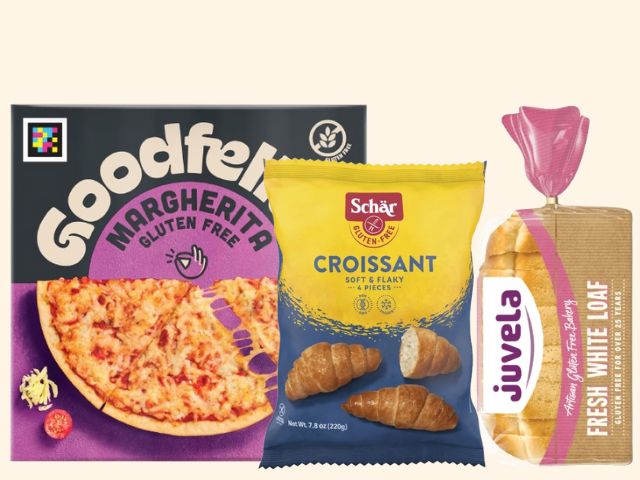Gluten Free Wheat
How some wheat-based ingredients can still be labelled gluten free


⚡ Fast Facts:
Gluten free wheat is safe for:
✅ People with coeliac disease
✅ Those with a gluten intolerance/sensitivity
✅ Those who avoid gluten for other medical reasons
Gluten free wheat is NOT safe for:
❌ Individuals with a wheat allergy
❌ Anyone advised to completely avoid wheat for other medical reasons
🌾 Understanding Gluten Free Wheat
Have you ever panicked after spotting 'wheat' on the ingredient list of a product clearly labelled 'gluten free'? You’re not alone - and the good news is, in most cases, there's no need to worry. Common examples include:
- 🍕 Goodfella's Gluten Free Margherita Pizza - ‘May contain traces of wheat’
- 🍞 Juvella Fresh White Loaf - ‘Contains gluten free wheat starch’
- 🥐 Schar Gluten Free 4 Croissants - ‘Contains gluten free wheat starch’
If you have coeliac disease or follow a gluten free diet, these products are safe to eat - as long as the packaging is clearly labelled 'gluten free'.

❓ What is ‘Gluten Free Wheat’?
Wheat naturally contains gluten, and is one of the key proteins that must be avoided by anyone gluten free. However, gluten free free wheat starch is a specially processed ingredient in which the gluten has been removed or reduced to below 20 parts per million (ppm) - the legal safety threshold for gluten free labelling in the UK and EU.
However, whilst gluten free wheat does not contain gluten, it still contains other wheat components. This means even gluten free wheat is not safe for someone with a wheat allergy or intolerance. This is because whilst the gluten is removed, other wheat proteins (such as albumins and globulins) remain, which can still trigger reactions in people with non-gluten wheat sensitivities.
That's why the word 'wheat' is still required to be emphasised on packaging - even if it's gluten free.
🏭 How is Gluten Removed from Wheat?
To create gluten free wheat, manufacturers use purification methods such as:
- Enzymatic treatment
- Filtration and washing
- Air classification and separation
These processes isolate the starch and remove gluten to safe levels, whilst retaining the structure and baking properties of regular wheat flour - making it ideal for creating light, fluffy gluten free products that kind of feel like the 'real deal'!
🤯 How Do I Know if the Wheat is Gluten Free?
If a product is labelled 'gluten free', you can feel confident it meets strict legal standards (less than 20 ppm of gluten). In the UK, these regulations are enforced by the Food Standards Agency, so certified gluten free products are suitable for people with coeliac disease.
However, if you have a wheat allergy or non-coeliac wheat intolerance, you'll need to go a step further:
- Carefully check the ingredients lists for 'gluten free wheat starch' on gluten free products
- Avoid anything that lists 'wheat' in the ingredients
- Look for additional allergy information on the label
👉🏽 Read more about certified gluten free labelling here
🤷🏾♀️ Who Can and Can’t Eat Gluten Free Wheat?
✅ Safe for:
- People with coeliac disease
- Those with non-coeliac gluten sensitivity
- Anyone avoiding gluten for other medical or lifestyle reasons
❌ Not safe for:
- People with a wheat allergy
- Those with a wheat intolerance unrelated to gluten
- Individuals advised by a healthcare professional to avoid all forms of wheat
👉🏻 Read more about the differences between coeliac disease and non-coeliac gluten sensitivities here
If you experience symptoms after eating gluten free products that contain wheat, it may be a reaction to non-gluten wheat proteins - or even ingredients like fat, fibre, or starch. It's important to distinguish whether your issue is with gluten or wheat more broadly.
If in doubt, always consult a healthcare professional. They can help identify what's safe for you and clarify whether gluten free wheat should be part of your diet.
🎯 Quick Recap
In the UK, if a product is labelled gluten free, it is safe for coeliacs - even if it contains gluten free wheat. Always check the packaging, don't assume a product is gluten free unless it's clearly stated. Wheat-free and gluten free are not the same - those with a wheat allergy should avoid gluten free wheat.